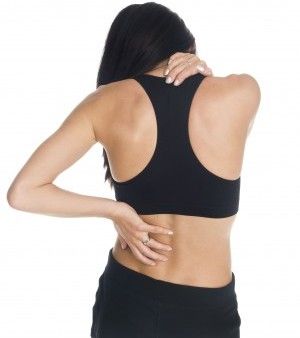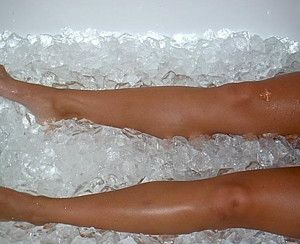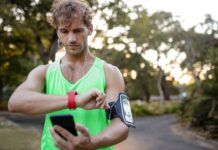Paddling fast and nailing long runs is a key part of the training process.
However, one of the most often neglected aspects of training, especially since paddlers are almost always obsessed with pushing harder each day, is the recovery process.
Not everyone will have the time necessary to perform this routine after every hard workout. Some might be able to fit it in after regattas, others might be able to see it through once per month.
While this is the ideal recovery plan, you’re free to pick and choose what you’re able to fit in after each workout. For example, the easiest elements, hydration and refueling, should be easy to get in after every session while the ice bath is a nice treat when you have the time.
On a side note, this is what separates professional dragon boat paddlers from the rest of the pack; in addition to paddling, drills, and strength training each day, elite paddlers will often spend 1-4 hours per day on recovery!
Recovery steps immediately after your workout or regatta.
Hydrating
After a hard workout or a tough long paddling session, you should begin by hydrating within the first 10-15 minutes after stopping. Even if the temperature was cool, or downright cold, you still sweat a significant amount and you need to replace the fluid loss. An electrolyte solution like Gatorade works best and you should aim for 2 cups of fluid.
Replenishing carbs and protein
After you’re hydrated, you can begin your stretching routine while also ingesting your post exercise snack or beverage. This post exercise fuel could be something like chocolate milk, yogurt and granola, banana and peanut butter bagel with orange juice. You want to aim for a 4 to 1 ratio of carbohydrates to protein. Runners Connect has experimented with glucose tablets (made for diabetics) directly after paddling. The tablet is pure glucose, which stimulates the insulin response in the body and ignites the recovery process. It’s a quick and dirty trick if you’re crunched for time or have a sensitive stomach.
Stretching
The stretching and post exercise fueling should begin within 25-30 minutes of finishing your session. The stretching should last 10-15 minutes, focusing on the major muscle groups (quads, hamstrings, calves, and hips) as well as anything that is nagging or felt sore on the run. While the merits of stretching are a hotly debated topic, I believe light stretching after a paddle is beneficial. If you have a foam roller and are experiencing any small injuries, it would also be beneficial to roll out on the foam roller to alleviate any knots and tightness.
Ice bath
After stretching, it’s time to hit the ice bath.
Fill your bath tub with cold water and add ice until the temperature reaches a balmy 15 degrees Celsius. If you don’t have a thermometer, the ice should still completely melt, but it should take about 3-5 minutes for a normal size ice cube to do so.
Next, grab a towel and submerse your entire lower body, up to your hips, in the water. The trick to ice baths is surviving the first 3 minutes. Bite the towel and dream about your biggest goals. This will help you get through the hardest part of the ordeal.
After 3 minutes or so, you’ll notice the temperature feels more temperate and you can actually relax a little. If you are a veteran ice bather, or just a sadistic human being, you can kick your legs a little to stir up the water. This will help circulate the warm water surrounding your body and make things cold again.
Remain in the tub for 10-15 minutes. Trust me, the more you ice bath, the more comfortable this process becomes. After letting all the water drain from the tub, go ahead and take your shower. Your legs will feel cold for a few hours, but your muscles will thank you later.
Eat a well-balanced meal 1-2 hours after your paddle
After the ice bath, you’ll want to ensure that you get a well-balanced meal in your system.
So far, you’ve had Gatorade and some light snacks.
To completely refuel within your second optimal window, your muscles need something more substantial. If you paddled in the morning, this could be breakfast – egg whites with veggies and whole wheat toast, oatmeal with fruit and toast, I even think pancakes are a decent choice if you top with fruit and yogurt.
Lunch or dinner could be salad with a sandwich, pasta, or leftovers from the night before. You just want to consume a high quality meal with a good balance of carbohydrates, proteins and fats. This will provide your body with the final nutrients it needs to top off the recovery process.
Take a nap or get a massage – what a luxury
After your meal, put your feet up, take a nap, and follow it up with a massage.
I know this is where things can get “ridiculous”, as massages and naps are a fantasy and extreme luxury; however, I thought it should be included since this is the “optimal” recovery guide after all.
Warm bath with epsom salts
About 60-90 minutes before bed, you should take a warm/hot bath in Epsom salts.
Combine 4 cups Epsom salt with 1 cup baking soda and relax in the hot water for 10-15 minutes. After the bath, dry off and roll out your muscles with The Stick.
Not only with this help remove excess toxins from the muscles, the stretching before bed will ensure that you wake up feeling ready to go for your next paddle. Furthermore, the relaxing bath and the Epsom salts will help you sleep.
To sum up this routine in one easy to visualize chart:
- Hydrate as soon after your paddling as possible with Gatorade or electrolyte drink
- Lightly stretch major muscle groups and anything that is sore or tight. Roll out any nagging injuries or problem areas.
- Eat a small meal that contains a 4 to 1 ratio of carbohydrates to protein
- Take an ice bath
- Eat a decent sized, healthy meal 1 to 2 hours after your paddle
- Nap, put your feet up, or get a massage
- Take an Epsom salt bath
- Roll out on the stick and stretch well
- Get plenty of sleep
As you can see, this routine is quite extensive. You won’t always have the time to get in all of these recovery protocols, but it does give you glimpse of the things you could do on those rare occasions. Do what you can, but at least now you have a plan.
This is an adaptation of a post from RunnersConnect


















Steph Frost
[…] https://dragonanalytics.com.au/6-ways-to-get-rid-of-muscle-soreness-after-a-hard-paddling-session-or… […]